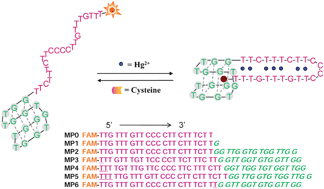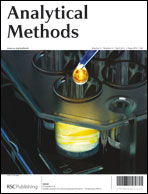G-quadruplex fluorescence quenching ability: a simple and efficient strategy to design a single-labeled DNA probe†
Abstract
A single labeled fluorescence probe was designed based on the efficient quenching ability of a G-quadruplex instead of traditional quenchers. Using this probe, we have investigated the quenching ability of a G-quadruplex and developed a new approach to analyze mercury ions and


 Please wait while we load your content...
Please wait while we load your content...